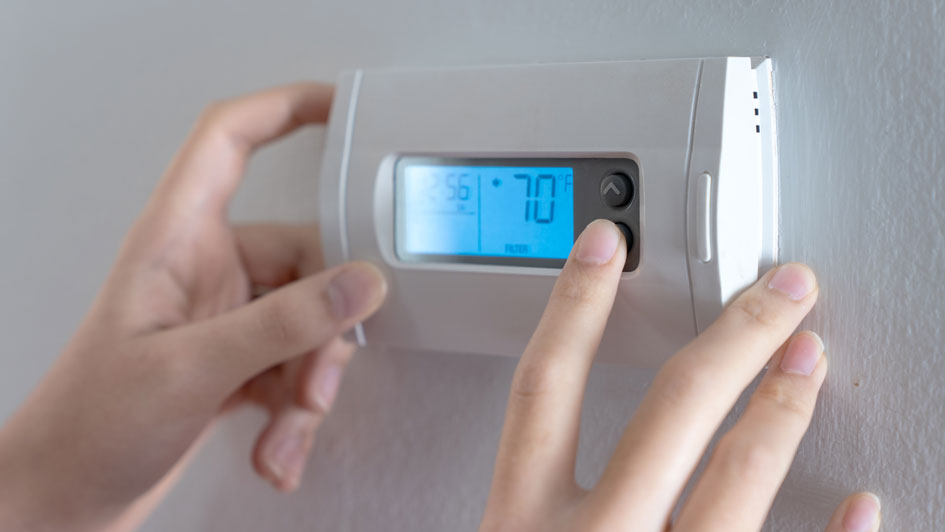
We all like saving money on our monthly utility bills, but you should know there’s a way to keep costs down, even when you're out of the house.
It starts with your thermostat. By learning more about its special features and settings, you can structure its daily schedule around your personal preferences. This means establishing various temperature settings for when you’re at home, away or even when you’re asleep.
With a few simple adjustments, you can enjoy comfy temperatures while also keeping more of your money. Check out our guide on how your thermostat can save you money in the summer:
While at Home
Whenever you're at home, you want to enjoy a comfortable temperature. For the most part, you probably have your thermostat lower in the summer while inside to appreciate the cool air.
But in terms of energy efficiency, the best range for the summer is in fact anywhere between 78 and 80 degrees Fahrenheit. With this adjustment, you'll keep cool while still keeping your energy bills low.
While Gone
If you're setting the temperature for when you are out of the house in summer, it’s advantageous to set the thermostat higher than you would if you were in the house.
Depending on the local climate or your home's location, you can set the thermostat to higher temperatures like 88 degrees while no one is home before lowering it back to the sweet spot of 78-80 degrees after you return. This way, your air conditioning unit won’t be working overtime to keep an empty house cool.
While Sleeping
To enjoy a good night's sleep during the summer, you want a nice cool temperature. A great place to start is between 68-72 degrees Fahrenheit. This will keep you from getting too hot or too cold at some point overnight.
Other Ways to Use Less Energy:
- Install a smart thermostat: Using a smart thermostat in the summer helps save money on energy costs as it forms temperature schedules according to your lifestyle and personal preferences. A smart thermostat manages the temperature if you are home or sleeping, while allowing it to warm up when no one is around. With models like the Lennox iComfort, you can adjust the temperature remotely through your smartphone, tablet or laptop. Scheduling smart thermostat installation in your Northridge home can be the simplest strategy for maintaining comfortable, yet energy-efficient temperatures whether you're at home or across the country.
- Replace current equipment with a newer HVAC system: Upgrading your HVAC system can save money in the long run. With greater energy efficiency, your utility bills will be lower because it requires less energy to heat and cool your home. Air conditioning installation in Northridge is a great way to beat the heat in the summer.
- Stay on top of routine AC maintenance: Hiring a skilled professional to perform regular air conditioning maintenance in Northridge can have a serious effect on your total monthly energy use. By regularly cleaning the coils, checking for damage and clearing air vents of dust and debris, this can help your HVAC system run more efficiently. Higher energy efficiency will also reduce strain on the unit and lowers operational costs, leading to lower energy usage, which translates into lower energy bills.
- Replace your air filter regularly: Regularly changing the air filters in your HVAC system saves money by helping air flow efficiently through your air conditioner. When filters are old and less effective, your air conditioner will have to work harder, and the strain can reduce the system’s life span and result in breakdowns.
- Confirm your attic is sufficiently insulated: Insulation is one of the key components in any energy-efficient home, securing the hot air outside and the cool air inside during the summer. The North American Insulation Manufacturers Association (NAIMA) offers an official recommendation stating homeowners in souther states should have at least 13-14 inches of insulation, while states further north need 16-18 inches.
- Review your ductwork: Leaky ductwork can raise your energy bills much more than 20 percent, plus it can potentially allow harmful emissions from your water heater, clothes dryer and other appliances to get into the atmosphere of your home. Watching for signs of leaks and sealing them can address both concerns.
- Seal all other leaky spots in your home: Finding and sealing any remaining leaks in your home with caulk, foam sealant or weather-stripping can help keep it cooler on hot summer days. Don't forget to check for any gaps around windows, doors and even outdoor fixtures. Making time to seal leaks now can help you save a lot in the long run.

